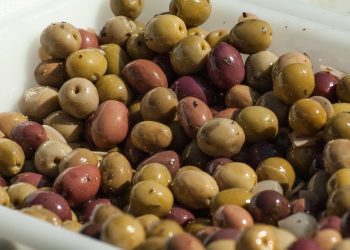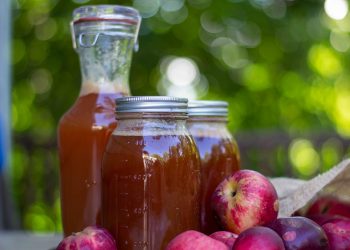Have you ever felt that nagging ache in your joints after a long day? You’re not alone. Joint pain is a common issue that affects millions of people worldwide, and finding effective relief can often feel like searching for a needle in a haystack. But what if I told you that nature might have some answers? Specifically, one herb that’s been gaining traction for its potential benefits is ashwagandha. This ancient adaptogen has been revered in Ayurvedic medicine for centuries, but its application for joint health is a topic worth exploring.
In this article, we’ll dive into five natural remedies for joint strength that incorporate ashwagandha. We’ll explore how this herb works, its potential benefits, and some other natural remedies that might complement its effects.
Contents
What is Ashwagandha?
Let’s start with the basics. Ashwagandha, scientifically known as Withania somnifera, is a small shrub native to India, the Middle East, and parts of Africa. Often referred to as “Indian ginseng” or “winter cherry,” it’s been used for over 3,000 years for its adaptogenic properties, meaning it helps the body manage stress.
How Does Ashwagandha Affect Joint Health?
Research suggests that ashwagandha may have anti-inflammatory properties, which could be beneficial for joint health. Inflammation is a primary contributor to joint pain and diseases like arthritis. A study published in the Journal of Clinical Psychiatry found that ashwagandha can reduce stress and inflammation markers in the body (Chandrasekhar et al., 2012).
1. Ashwagandha and Turmeric Combination
Why It Works: Turmeric, another powerhouse herb, contains curcumin, which is known for its potent anti-inflammatory properties. When combined with ashwagandha, the duo can potentially enhance joint strength and reduce pain.
How to Use It: You can create a simple turmeric latte by mixing ashwagandha powder and turmeric with warm milk (dairy or plant-based) and a dash of black pepper (which enhances curcumin absorption).
Pros:
- Both ingredients are natural and have minimal side effects.
- They can be easily incorporated into your diet.
Cons:
- Some people may experience stomach upset from turmeric.
- The taste might not be for everyone, but a bit of honey can help!
2. Omega-3 Fatty Acids
Why It Works: Omega-3 fatty acids, commonly found in fish oil, are well-documented for their anti-inflammatory properties. When paired with ashwagandha, they may provide a synergistic effect to support joint health.
How to Use It: Consider taking a high-quality fish oil supplement alongside your ashwagandha. Alternatively, you can consume omega-3-rich foods like chia seeds, flaxseeds, and walnuts.
Pros:
- Omega-3s are supported by a wealth of research for reducing joint pain and stiffness.
- They promote overall heart health.
Cons:
- Some people may find fish oil supplements fishy or hard to digest.
- Always check for potential allergies before consuming fish products.
3. Ginger Tea with Ashwagandha
Why It Works: Ginger has long been used in traditional medicine for its anti-inflammatory properties. When combined with ashwagandha, it may help further alleviate joint pain and improve mobility.
How to Use It: Brew fresh ginger tea by boiling fresh ginger slices in water. Once steeped, add a teaspoon of ashwagandha powder for an extra boost.
Pros:
- Ginger is widely available and adds a pleasant flavor.
- It can also help with digestive issues.
Cons:
- Excessive ginger can lead to heartburn in some individuals.
- The flavor might be too strong for those who prefer milder teas.
4. Exercise and Ashwagandha
Why It Works: While it may seem counterintuitive, regular exercise strengthens the muscles around your joints, providing better support and reducing pain. Ashwagandha can help improve endurance and recovery, making your workouts more effective.
How to Use It: Incorporate ashwagandha into your pre-workout routine by taking it in supplement form or as a powder mixed with your favorite smoothie.
Pros:
- Exercise releases endorphins, improving your mood and reducing pain perception.
- Ashwagandha can help reduce exercise-induced stress.
Cons:
- Not everyone enjoys working out, and it’s essential to find activities you love.
- Overexertion can lead to injury, so listen to your body.
5. Mindfulness and Stress Reduction
Why It Works: Stress can exacerbate inflammation and pain. Incorporating mindfulness practices, such as meditation or yoga, can help manage stress levels. Ashwagandha is known to support stress reduction, making it an excellent companion in your wellness routine.
How to Use It: Consider integrating a daily mindfulness practice, such as a 10-minute meditation session or gentle yoga, while taking ashwagandha supplements.
Pros:
- Mindfulness has been shown to improve overall well-being and reduce pain perception.
- Ashwagandha can enhance the benefits of your mindfulness practices.
Cons:
- Some may find it challenging to sit still or quiet the mind.
- It requires consistency to see significant benefits.
FAQs
1. Can ashwagandha help with arthritis?
Yes, some studies suggest that ashwagandha may help reduce inflammation, which can benefit those with arthritis. However, always consult your healthcare provider before starting any new supplement.
2. Are there any side effects of ashwagandha?
While generally considered safe, some people may experience digestive upset, drowsiness, or allergic reactions. It’s essential to start with a lower dose and monitor how your body reacts.
3. How long does it take to see results from ashwagandha?
Results can vary, but many people report improvements within a few weeks of consistent use. Patience is key, as natural remedies often take time to show their full benefits.
4. Can I take ashwagandha with other medications?
It’s crucial to consult a healthcare provider before combining ashwagandha with other medications, especially if you’re on blood thinners or medications for thyroid issues.
Conclusion
Navigating joint pain can be challenging, but integrating natural remedies like ashwagandha into your routine may offer relief and strengthen your joints over time. Whether you’re sipping ginger tea, enjoying a turmeric latte, or hitting the gym, these holistic approaches can work together to improve your overall health.
It’s essential to remember that everyone’s body is different. What works wonders for one person might not be as effective for another. So, as you experiment with these remedies, pay attention to how your body responds.
As research continues, we may uncover even more benefits of ashwagandha and other natural remedies for joint health. Always consult a healthcare professional before making significant changes to your health routine, and remember: the journey to wellness is often a path of trial and error.
This article is for educational purposes only and is not a substitute for professional medical advice. Always consult a qualified healthcare provider before making changes to your health routine.
References
-
Chandrasekhar, K., Kapoor, J., & Anishetty, S. (2012). A prospective, randomized double-blind, placebo-controlled study of the efficacy and safety of ashwagandha root extract in the treatment of chronic stress. Journal of Clinical Psychiatry, 73(10), 1-5. https://pubmed.ncbi.nlm.nih.gov/23439798/
-
National Institutes of Health. (2021). Ashwagandha. https://nccih.nih.gov/health/ashwagandha
-
Mayo Clinic. (2022). Turmeric: A natural anti-inflammatory. https://www.mayoclinic.org/healthy-lifestyle/nutrition-and-healthy-eating/expert-answers/turmeric/faq-20058090
Get Your FREE Natural Health Guide!
Subscribe now and receive our exclusive ebook packed with natural health tips, practical wellness advice, and easy lifestyle changes — delivered straight to your inbox.















